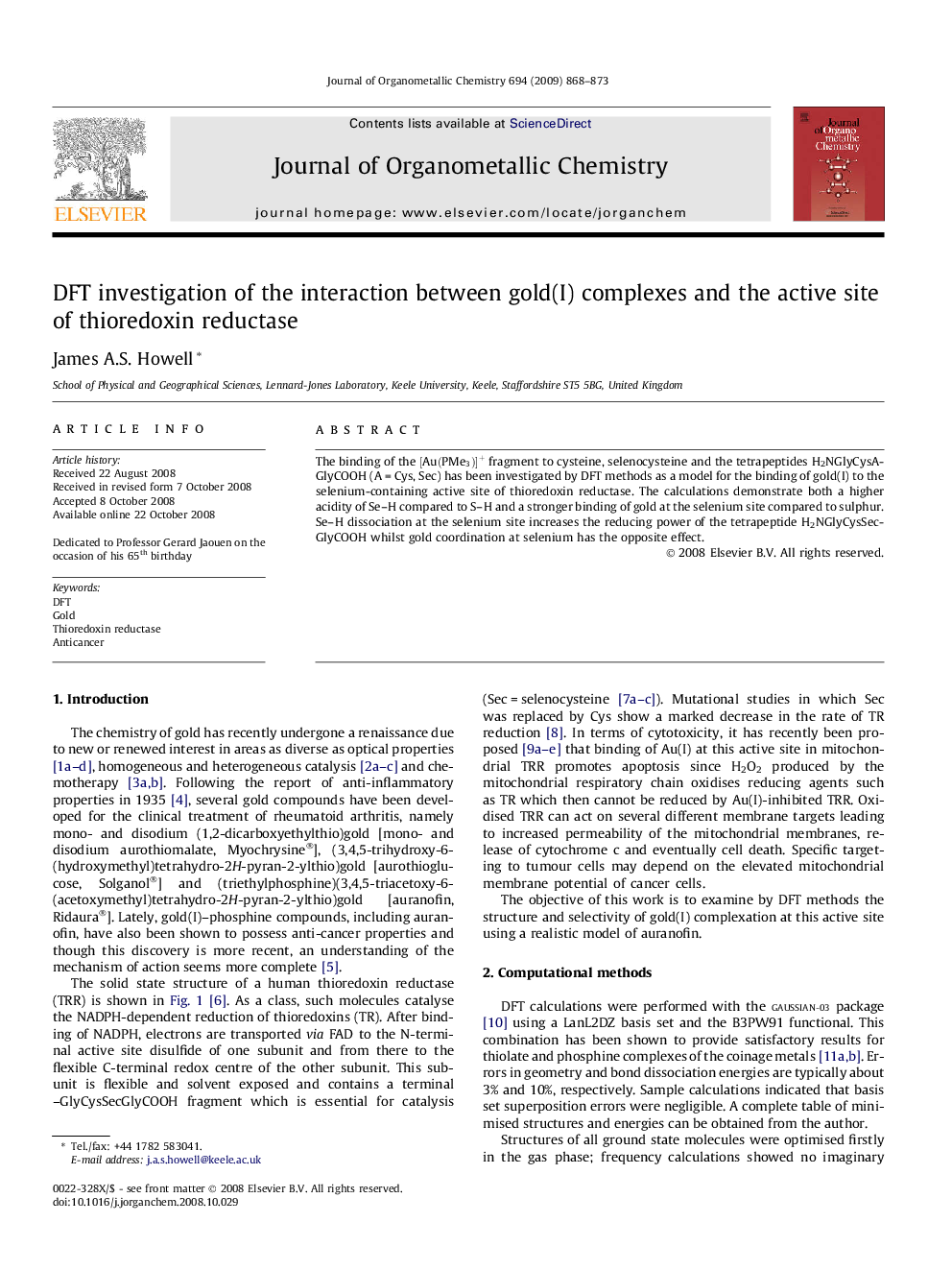| Article ID | Journal | Published Year | Pages | File Type |
|---|---|---|---|---|
| 1322859 | Journal of Organometallic Chemistry | 2009 | 6 Pages |
The binding of the [Au(PMe3)]+[Au(PMe3)]+ fragment to cysteine, selenocysteine and the tetrapeptides H2NGlyCysAGlyCOOH (A = Cys, Sec) has been investigated by DFT methods as a model for the binding of gold(I) to the selenium-containing active site of thioredoxin reductase. The calculations demonstrate both a higher acidity of Se–H compared to S–H and a stronger binding of gold at the selenium site compared to sulphur. Se–H dissociation at the selenium site increases the reducing power of the tetrapeptide H2NGlyCysSecGlyCOOH whilst gold coordination at selenium has the opposite effect.
Graphical abstractDFT methods have been used to investigate the bonding of gold(I) to the active site of thioredoxin reductase.Figure optionsDownload full-size imageDownload as PowerPoint slide
